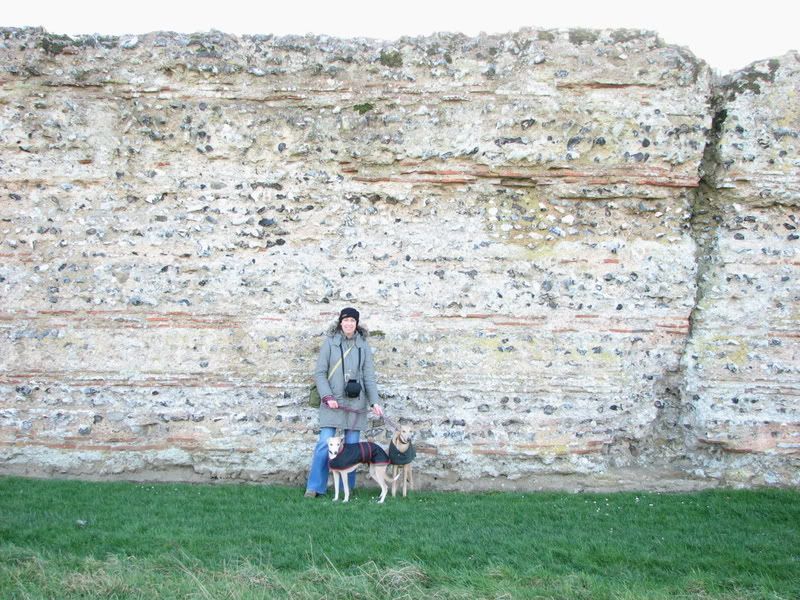Post by Johnny on Feb 1, 2008 6:23:20 GMT
A Reconnaissance mission was undertaken to Burgh Castle (near Gt. Yarmouth) - which will be our club outing venue for May.
Fortunately for us, it was a really nice sunny day.
The castle is actually a Roman Fort (built circa 280AD), and was a garrison station for Roman Cavalry until about the 5th century. The sea levels in those days were a bit higher than they were now, and the estuary (Breydon Water) was a lot wider than it is now. This fort protected the south side, whilst Caistor protected the north. I suppose they stationed cavalry there, as this proved a better "rapid reaction force" than having ship-borne soldiers, who had to catch up with marauders sailing up the river!
As you can see from the pics below, quite extensive remains of the fort still stand, with most of the three main perimeter walls still in place. In some parts they stand to some twenty feet tall.
.
Below: A windswept Johnny (& kids), in front of Breydon Water:

Below: The kids. Sugar's asking: "Where's the Fort Daddy"!

Below: The north facing wall

Below: One of the turrets

Below: Kitty (& kids) standing next to the original Roman wall:

An impressive turret on the NE section of the wall. Quite visible is the Roman building technique, of layering flints with clay tiles

Below: The nearby Saxon church. I bet most of the building materials for this church came from the nearby castle. They certainly look like Roman tiles making up part of it's tower.

Below: We found this nice little pub nearby, and guess what - They are dog-friendly!!!!! So, you know where we can end up, when we finish the visit!

This looks as if it will be a really nice afternoon out for the gery's.
During our Recce mission we noted places to park, and found the easiest access to the fort.
PS-Thanks to Tanya, who we called in to visit afterwards - and who provided us with a nice cup of tea!

Fortunately for us, it was a really nice sunny day.
The castle is actually a Roman Fort (built circa 280AD), and was a garrison station for Roman Cavalry until about the 5th century. The sea levels in those days were a bit higher than they were now, and the estuary (Breydon Water) was a lot wider than it is now. This fort protected the south side, whilst Caistor protected the north. I suppose they stationed cavalry there, as this proved a better "rapid reaction force" than having ship-borne soldiers, who had to catch up with marauders sailing up the river!
As you can see from the pics below, quite extensive remains of the fort still stand, with most of the three main perimeter walls still in place. In some parts they stand to some twenty feet tall.
.
Below: A windswept Johnny (& kids), in front of Breydon Water:

Below: The kids. Sugar's asking: "Where's the Fort Daddy"!

Below: The north facing wall

Below: One of the turrets

Below: Kitty (& kids) standing next to the original Roman wall:

An impressive turret on the NE section of the wall. Quite visible is the Roman building technique, of layering flints with clay tiles

Below: The nearby Saxon church. I bet most of the building materials for this church came from the nearby castle. They certainly look like Roman tiles making up part of it's tower.

Below: We found this nice little pub nearby, and guess what - They are dog-friendly!!!!! So, you know where we can end up, when we finish the visit!

This looks as if it will be a really nice afternoon out for the gery's.
During our Recce mission we noted places to park, and found the easiest access to the fort.
PS-Thanks to Tanya, who we called in to visit afterwards - and who provided us with a nice cup of tea!

